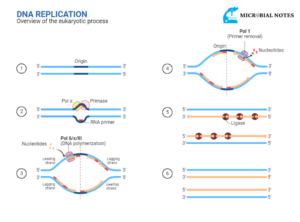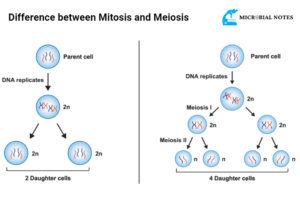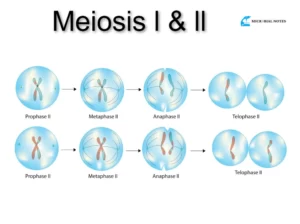Introduction
The nucleus, the central organelle within eukaryotic cells, is encapsulated by a vital structure known as the nuclear envelope. This double-membraned boundary plays a crucial role in maintaining the integrity of the genetic material and orchestrating various cellular processes. Understanding the nuclear envelope is fundamental to comprehending the complexities of cellular organization and function.
Definition of the Nuclear Envelope
The nuclear envelope refers to a double-layered membrane structure that surrounds the nucleus of eukaryotic cells, separating the genetic material from the cytoplasm. Comprising an inner and outer membrane, the nuclear envelope acts as a selective barrier, controlling the passage of molecules between the nucleus and the cytoplasm. This dynamic boundary is perforated by nuclear pores, allowing regulated communication and transport of macromolecules.
Historical Overview of Nuclear Envelope Discovery
The discovery of the nuclear envelope can be traced back to early investigations into cell biology. The initial observations of cell structure were made possible by advancements in microscopy. In the 19th century, with the development of light microscopy, scientists like Robert Brown identified the cell nucleus. Subsequent advancements, including electron microscopy in the mid-20th century, enabled researchers to delve deeper into cellular structures.
The nuclear envelope’s detailed study began with the pioneering work of scientists such as Michael J. Birnstiel and George E. Palade in the 1950s. Their electron microscopy studies revealed the presence of a double-membraned structure around the nucleus, later named the nuclear envelope. As technology advanced, the identification of nuclear pores and the understanding of their role in nucleocytoplasmic transport further expanded our knowledge of this essential cellular component. Today, the study of the nuclear envelope continues to be a dynamic field, with ongoing research revealing new insights into its structure, functions, and implications for various cellular processes.
Structure of the Nuclear Envelope
Double Membrane Structure
The nuclear envelope exhibits a distinctive double-membraned structure that envelops the nucleus, providing both protection and regulation of molecular traffic. This dual-layered boundary consists of the inner nuclear membrane and the outer nuclear membrane.
Inner Nuclear Membrane
Composition
The inner nuclear membrane is a phospholipid bilayer that closely associates with the nuclear lamina, a meshwork of intermediate filaments composed of lamins. Phospholipids, similar to those found in the plasma membrane, form the basic building blocks of the inner nuclear membrane. However, the lipid composition is unique and enriched in specific lipids, such as phosphatidylserine.
Integral membrane proteins embedded in the inner nuclear membrane contribute to its structural integrity and facilitate various functions. These integral membrane proteins include emerin, lamin B receptor, and MAN1 (meningioma-associated protein 1), which interact with nuclear lamins and chromatin to maintain nuclear stability.
Functions inner membrane
The inner nuclear membrane plays a crucial role in regulating nucleocytoplasmic transport and maintaining nuclear architecture. It provides anchoring sites for chromatin and nuclear lamins, contributing to the overall structural organization of the nucleus. Additionally, the inner nuclear membrane contains proteins involved in signal transduction, affecting gene expression and cellular responses.
One essential function is its involvement in nucleocytoplasmic transport through nuclear pores. The inner nuclear membrane contains nuclear pore complexes, which are responsible for controlling the movement of molecules between the nucleus and cytoplasm. Specific proteins, such as importins and exportins, mediate the transport of molecules, including RNA and proteins, across the inner nuclear membrane, ensuring the precise regulation of cellular processes.
The inner nuclear membrane is also dynamic and undergoes changes during various cellular events, such as cell division. It actively participates in the disassembly and reassembly of the nuclear envelope during mitosis, contributing to the proper segregation of genetic material.
Outer Nuclear Membrane
Composition
The outer nuclear membrane, like the inner nuclear membrane, is a phospholipid bilayer that surrounds the nucleus. Comprising a diverse array of lipids, including phosphatidylcholine and phosphatidylethanolamine, the outer nuclear membrane has a lipid composition similar to that of the endoplasmic reticulum (ER), with which it is continuous. This continuity with the ER is crucial for the exchange of lipids and proteins between the two structures.
Integral membrane proteins are embedded in the outer nuclear membrane, contributing to its structure and functionality. Some of these integral membrane proteins include nesprins, SUN proteins (Sad1p, UNC-84), and KASH proteins (Klarsicht, ANC-1, Syne Homology). These proteins play roles in nuclear positioning, anchoring the nucleus to the cytoskeleton, and connecting the nucleoskeleton to the cytoskeleton (LINC complex).
Function of outer membrane
The outer nuclear membrane serves various functions critical to cellular activities and nuclear dynamics. One of its primary functions is its involvement in maintaining the structural integrity of the nucleus. The connection between the outer nuclear membrane and the ER provides mechanical support to the nucleus, influencing its shape and preventing collapse.
Moreover, the outer nuclear membrane is instrumental during cellular processes such as cell division. It undergoes dynamic rearrangements, allowing for the disassembly and reassembly of the nuclear envelope during mitosis. This process is crucial for the proper segregation of genetic material into daughter cells.
Additionally, the outer nuclear membrane is involved in signaling pathways that regulate gene expression and cellular responses. The connection between the outer nuclear membrane and the cytoskeleton, facilitated by the LINC complex, enables the transmission of mechanical forces and signaling cues between the nucleus and the cell periphery.
Nuclear Pores
Nuclear pores are complex structures embedded in the nuclear envelope, facilitating communication and molecular exchange between the nucleus and the cytoplasm. These pores are large, multiprotein assemblies characterized by their distinctive cylindrical shape. They are composed of multiple protein subunits arranged in a symmetrical manner, creating a channel that spans both the inner and outer nuclear membranes.
Nuclear pores are crucial for maintaining cellular homeostasis by controlling the passage of molecules between the nucleus and cytoplasm. They play a central role in various cellular processes, including nucleocytoplasmic transport, gene expression regulation, and the maintenance of nuclear envelope integrity.
Role in Molecular Transport
The primary function of nuclear pores is to regulate the transport of molecules, including ions, RNA, and proteins, between the nucleus and the cytoplasm. This selective permeability is essential for maintaining the distinct biochemical environments of the nucleus and cytoplasm and ensuring the proper functioning of cellular processes.
Nucleocytoplasmic transport involves intricate mechanisms facilitated by specific transport receptors, such as importins and exportins. These receptors recognize nuclear localization signals (NLS) and nuclear export signals (NES) on cargo molecules, facilitating their transport through the nuclear pores. The process is energy-dependent and tightly regulated, ensuring the precise movement of molecules in and out of the nucleus.
Protein Components
Nuclear pores consist of a diverse array of proteins that collaboratively form a structure known as the nuclear pore complex (NPC). Key components of the NPC include nucleoporins (Nups), which are proteins with multiple copies forming the building blocks of the pore. Nucleoporins are classified into structural Nups, membrane Nups, and scaffold Nups, each contributing to the overall architecture and functionality of the nuclear pore.
Several nucleoporins within the NPC play specific roles in molecular transport. FG (phenylalanine-glycine) repeat-containing nucleoporins line the central channel of the pore, creating a selective barrier that facilitates the passage of molecules based on size and specific interactions with transport receptors.
The regulation of nucleocytoplasmic transport is tightly controlled by the coordinated actions of nucleoporins and associated proteins. This intricate molecular machinery ensures the fidelity and specificity of molecular transport processes through the nuclear pores.
Lipids
Lipids are essential constituents of the nuclear envelope, contributing to its structure, flexibility, and functionality. The lipid composition of the nuclear envelope is unique and distinct from other cellular membranes, playing a critical role in maintaining the integrity of the nuclear envelope.
Phospholipids
Phospholipids form the fundamental building blocks of the lipid bilayers in the nuclear envelope. Similar to other cellular membranes, phospholipids consist of a hydrophilic head and hydrophobic tails. Phosphatidylcholine, phosphatidylethanolamine, phosphatidylinositol, and phosphatidylserine are among the key phospholipids found in the nuclear envelope.
The distribution of phospholipids is not uniform across the inner and outer nuclear membranes. Asymmetry in phospholipid composition contributes to the specialized functions of each membrane. For example, phosphatidylserine is more abundant in the inner nuclear membrane and plays a role in chromatin binding and nuclear envelope stability.
The interactions between phospholipids and integral membrane proteins are crucial for the structural integrity of the nuclear envelope. These interactions help anchor proteins to the lipid bilayers, contributing to the overall stability of the nuclear envelope.
Function
The nuclear envelope, a double-membraned structure surrounding the nucleus in eukaryotic cells, serves as a crucial regulator of cellular processes. Its primary functions include providing mechanical support to the nucleus through the nuclear lamina, orchestrating nucleocytoplasmic transport to control the movement of molecules between the nucleus and cytoplasm, and participating in chromosome organization and segregation during cell division.
The nuclear envelope also contributes to the maintenance of nuclear stability by responding to cellular stress and facilitating repair mechanisms. Recent advances in research, such as live cell imaging techniques and the identification of emerging therapeutic targets, are shedding light on the dynamic and intricate roles of the nuclear envelope in cellular physiology, aging, and diseases. As a nexus for genetic regulation, structural stability, and cellular signaling, the nuclear envelope plays a central role in maintaining the integrity and functionality of eukaryotic cells.
Nuclear Envelope-Related Diseases and Disorders
Progeria and Premature Aging
Progeria, also known as Hutchinson-Gilford Progeria Syndrome (HGPS), is a rare genetic disorder characterized by accelerated aging in children. It is caused by a mutation in the LMNA gene, which encodes for lamin A, a protein component of the nuclear lamina. The mutation leads to the production of a truncated and abnormal form of lamin A called progerin.
Mechanism:
– Progerin disrupts the normal architecture of the nuclear envelope, leading to cellular and tissue abnormalities.
– The altered nuclear envelope structure affects nuclear functions, such as DNA repair and gene expression, contributing to premature aging.
Muscular Dystrophy
Certain forms of muscular dystrophy, a group of genetic disorders characterized by progressive muscle weakness and degeneration, are associated with nuclear envelope abnormalities.
Emery-Dreifuss Muscular Dystrophy (EDMD):
– EDMD is linked to mutations in genes encoding nuclear envelope proteins, including emerin (found in the inner nuclear membrane) and lamin A/C.
– Mutations in these genes disrupt the normal function of the nuclear envelope, impacting muscle cells and contributing to muscle wasting and weakness.
Cancer and Nuclear Envelope Abnormalities
Nuclear envelope abnormalities are observed in certain types of cancer and can influence tumor development and progression.
Lamins and Cancer:
– Alterations in the expression and organization of lamins, especially lamin A/C, have been associated with various cancers.
– Abnormalities in lamins can affect nuclear envelope integrity, chromatin organization, and gene expression, contributing to cancer cell characteristics.
Nuclear Pore Complex in Cancer:
– Dysregulation of nuclear pore complex components can impact nucleocytoplasmic transport in cancer cells.
– Altered transport mechanisms influence the localization of key regulatory proteins, contributing to aberrant cellular processes in cancer.
What are the differences between the nuclear membranes of Animal and Plant cells?
Nuclear membranes of animal and yeast cells are far better understood than those of plant cells, however, this knowledge gap is narrowing as a result of recent studies. Many of the proteins that are present on the nuclear membranes of animal cells are absent from plant nuclear membranes, although some pore membrane proteins are specific to plants.
Plants lack centrosomes and appear to rely solely on the nuclear membrane for DNA organization during cell division as opposed to animal cells, which have these structures to help order DNA as the cell prepares to divide. Researchers may be able to comprehend the peculiarities of nuclear membranes in plant cells with more study.
References:
https://byjus.com/biology/nuclear-membrane/







